
MOVING VISIONS: Dance Theatre of Harlem's Virginia Johnson Reflects on her Storied Dance Career
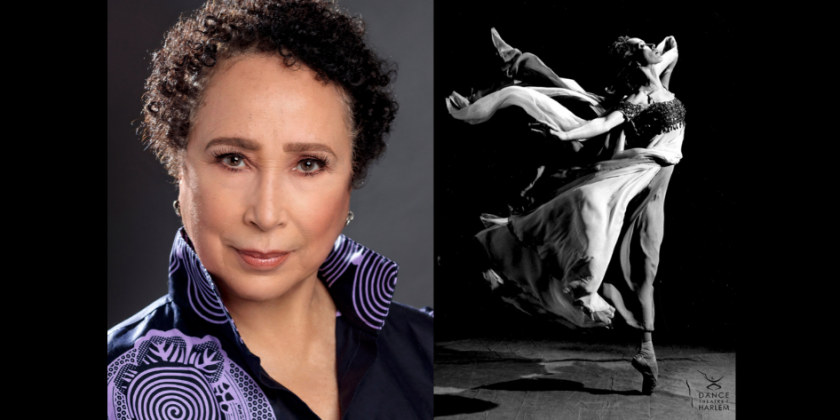
Part 1 of a 2-Part Series Featuring the Artistry of Ground-Breaking Prima Ballerinas, Virginia Johnson and Misty Copeland
Cover image: Headshot of Virginia Johnson courtesy of the artist | Dancing shot of Johnson in "A Streetcar Named Desire" by Toby McAfee and courtesy of the Dance Theatre of Harlem
You may write me down in history
With your bitter, twisted lies,
You may trod me in the very dirt
But still, like dust, I'll rise...
— Maya Angelou
Societal upheavals marked the late 1960’s — a time when political assassinations disoriented the public. Pivotal leaders like John F. Kennedy, Martin Luther King, Malcolm X, Robert Kennedy, and Fred Hampton were murdered between 1963 and 1969 igniting anger and fires throughout America. From those ashes rose Arthur Mitchell’s vision: the Dance Theatre of Harlem (DTH). Mitchell, the refined and eloquent star of the New York City Ballet, planted a ballet company for Black dancers to excel and enthrall the world.
Providentially, Virginia Johnson, a scholarship dance student newly enrolled at NYU, joined the fledgling DTH in 1969. Soon the remarkable ensemble of dancers drew countless accolades, especially Johnson, the tall, elegant principal dancer. Nearly 50 years after Johnson's achievement, Misty Copeland rose in the ranks to become the first Black principal dancer in American Ballet Theater's 75-year history. Compelled to dance, both groundbreaking ballerinas faced separate challenges in their odysseys.
In Washington, D.C. during the 1950’s/60’s, Johnson circumvented racist practices preventing Blacks from mingling with Whites by securing ballet classes with Therrell Smith — a friend of her mother's. Growing up in the 1980's/1990's, Copeland faced a different obstacle — affordability. Free dance classes at a Boy's and Girl's Club opened the complicated road to her future training. Once immersed in dance, both found deeply personal ways to fold themselves into ballets.
A charter member of DTH, Johnson triumphed in dramatic roles. Besides Mitchell's access to ballets by George Balanchine, he also plumbed the choreography of legendary choreographers like Valerie Bettis, Agnes deMille, and Bronislava Nijinska.
A STREETCAR NAMED DESIRE
Choreography by Valerie Bettis
Visualizing "Blanche DuBois" as the perfect vehicle for Johnson, Mitchell invited the intensely theatrical choreographer Valerie Bettis to re-stage her 1952 ballet based on Tennessee Williams' tragedy A Streetcar Named Desire. Cast in the lead opposite a "ferocious" Lowell Smith as "Stanley", Johnson enveloped "Blanche" a fragile, Southern beauty who fades into insanity after "Stanley"(her brother-in-law) rapes her.
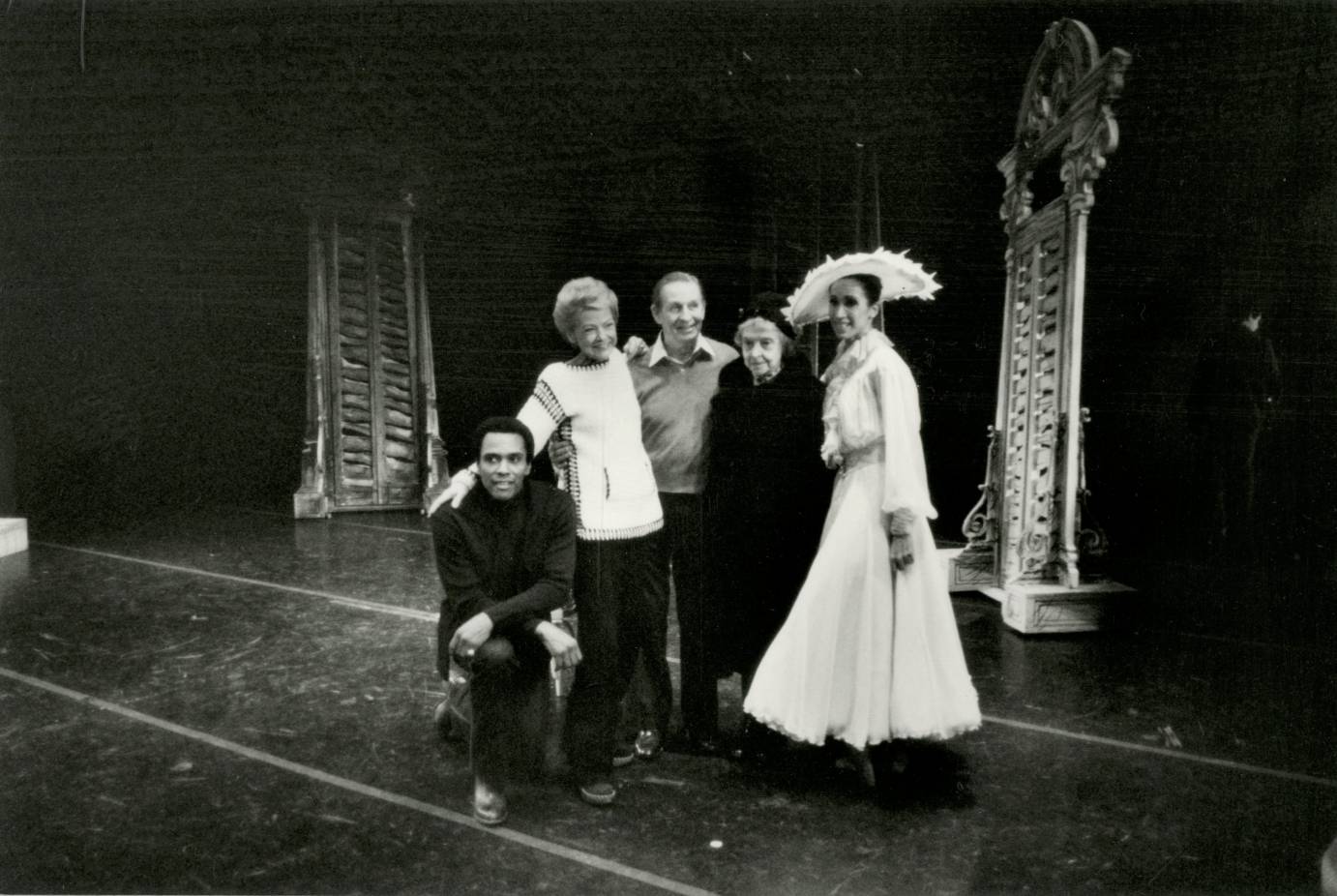
When rehearsals began in 1982, Bettis asked Johnson if “she’d done her homework.” Indeed, Johnson read the play and researched a character that kept eluding her. “I couldn’t understand her hysteria... I found it difficult to identify with Blanche — a victim from beginning to end.”
Conversely, she pointed to her partner, Lowell Smith, who "was ready to be Stanely, and very impatient with me struggling to find my character."
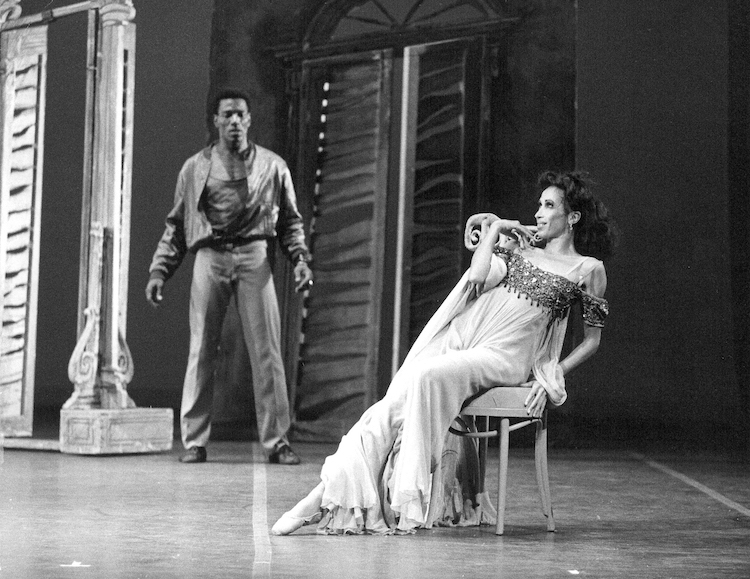
Already ill, Bettis (who died one year later) spoke to the dancers in a whisper. According to Johnson, “Bettis' quietness drew you in, forcing you to listen, as if she was imparting important secrets.” That same year, on the educational TV series EYE ON DANCE, Bettis insisted, "The exciting thing is to know where you're going and why you're going..."
An indelible experience, Johnson credits Bettis with teaching her a new way to dance because she “wanted us to dig into the narrative, the personalities and discover how human beings react in these situations." She concentrated on the development of a character and “guided us to learn a new way to dance. It wasn’t about the passé, it was about the intent of the movement — the expression of the character.” Jennifer Dunning of The New York Times (NYT) marveled: ”Johnson gave one of those flamelike performances ...all long, broken and stretching limbs... frighteningly intense as the mad Blanche DuBois."
FALL RIVER LEGEND
Choreography by Agnes deMille
One year later, Johnson secured the title role of "Lizzie Borden" in Agnes deMille's Fall River Legend. Not only did Johnson research her subject (a habit she practiced throughout her career), she read books on the woman accused of killing her parents with an axe, and even visited Borden's house and the cemetery in Fall River.
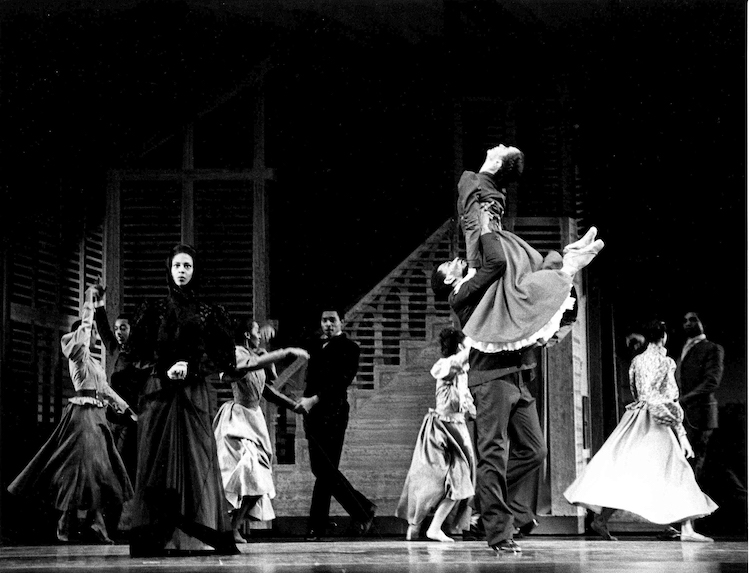
“Fall River Legend was an exquisitely crafted ballet, magical!" asserts Johnson. "And even Morton Gould's score was crafted with detailed input from deMille She was in control. By 1983, deMille was an elderly lady (she suffered a stroke in 1973) but she was a tiger... imposing, demanding and scathing in her corrections."
A guest on EOD in 1988, deMille clarified the essence of her style: "...to be clear, to be concise, to do one thing at a time and do it on the musical phrase."
Clued into the process of character discovery, Johnson understood deMille's demands while working on motivation. In the dream sequence, deMille directed Johnson to "use your hands like cotton balls hitting clouds of flour so the dust falls back on you." At the premiere, Anna Kisselgoff (NYT) gushed: "Fall River Legend was a triumph for... Johnson who made something shattering and new of the heroine."
LES BICHES
Choreography by Bronislava Nijinska
Deemed a "pace setting company" by the Washington Post, these were remarkable times for the company because that same year, DTH recovered Bronislava Nijinska’s historic ballet Les Biches from the Diaghilev era. Set on the company by Nijinska's daughter, Irina and a dance notator Juliette Kand, Johnson plunged into the history of Les Biches — a flirtatious, sexually ambivalent ballet about manners that premiered in Paris, 1924. To prepare, Johnson read Nijinska's autobiography and books on the Diaghilev era. A guest on EOD in 1986, Irina Nijinska pointed to her mother's "desire to be experimental, put modern and Japanese dance on ballet."
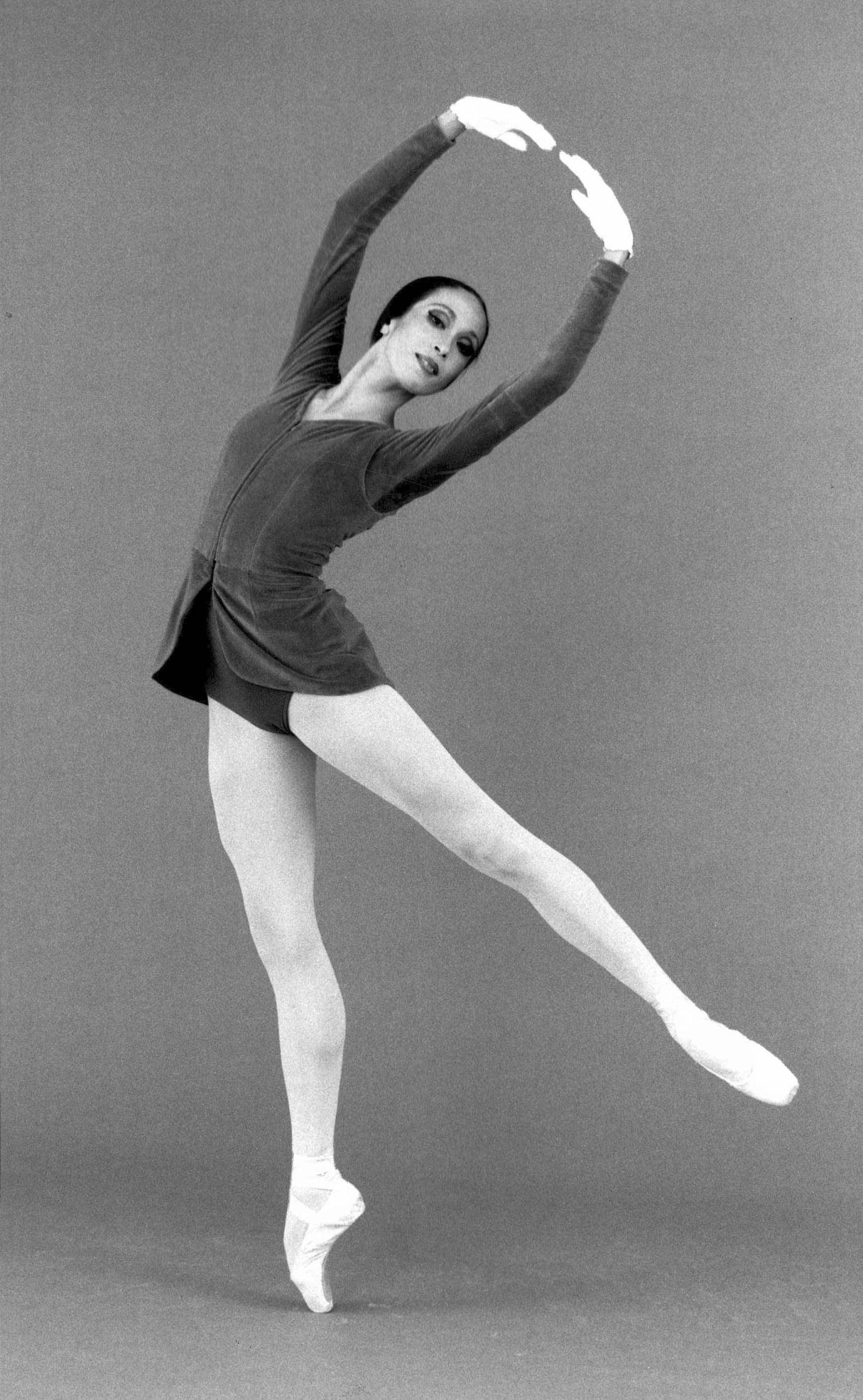
Stylistically, Nijinska's choreography proved awkward to Johnson, "An interesting, angular role, the 'Girl in Blue' was very weird and exotic. The role required erasure of myself to ensure I was blank, because the 'Girl in Blue' was a mystery. It was like stepping into this amazing piece of history. I felt a deep sense of responsibility." When asked if she considered any of the 1920’s gender-bending issues raised in the ballet, Johnson replies, "No, we weren't having those conversations in 1983."
CREOLE GISELLE
Traditional, reconceived by Arthur Mitchell, staged by Frederick Franklin
One year later, in 1984, Creole Giselle premiered at the London Coliseum starring Johnson as "Giselle". In Johnson's estimation "I couldn’t have done the mad scene in Giselle if I hadn’t done Streetcar... and Fall River Legend."
Mitchell preserved the traditional choreography, but transported Giselle from a medieval village in Austria to1800's Louisiana. Recently freed slaves and landowners replaced the peasants and noblemen in DTH's scenario. Staged by the beloved Frederick Franklin, Creole Giselle electrified audiences.
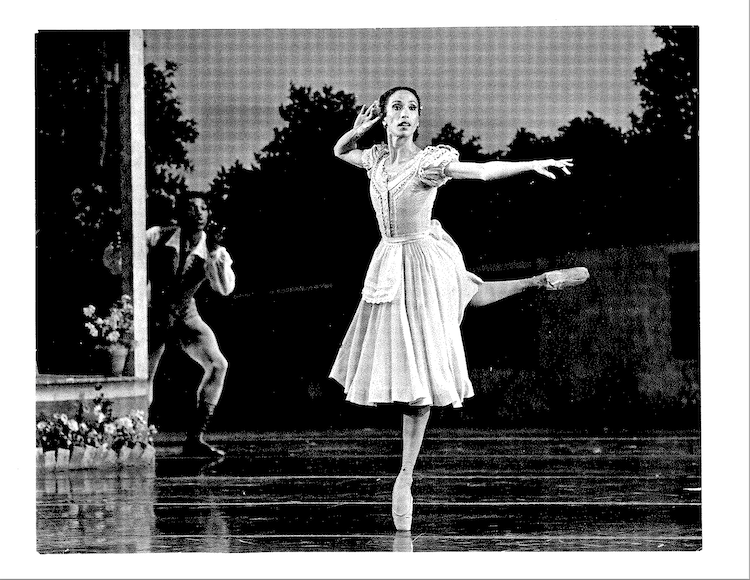
On EOD, Karel Shook, co-founder of DTH, contextualized strides made by Black dancers, "...historically, Black people have only had the opportunity to study ballet in the last 50 years." So when the NYT asked if the company was ready for the Giselle challenge, Shook countered, "With their youth, vitality and ability to sublimate technique to artistry, I think the dancers may be what the future of dancing is in America."
As the first full-length DTH ballet, Creole Giselle proved both a dramatic and technical challenge for Johnson who dove into the historical research and mastery of the devilish technical demands. Recalling tours to the South, Johnson could feel the heat and humidity of the Bayous: “I was imagining the humid air, and warm nights... I researched Louisiana in the 1840’s, Russian ballerinas who performed Giselle, and the original ballet style.”
Franklin along with his former Ballet Russe de Monte Carlo partner, Alexandra Danilova focused on the movement's flair, shape and sound. "They really wanted us to communicate, they didn't want us to worry about technique." For Johnson, dance was instinctual: "I always experienced joy from it, but I always felt clumsy, uncoordinated... I felt I had to tap into the intellectual to make up for my deficiencies."
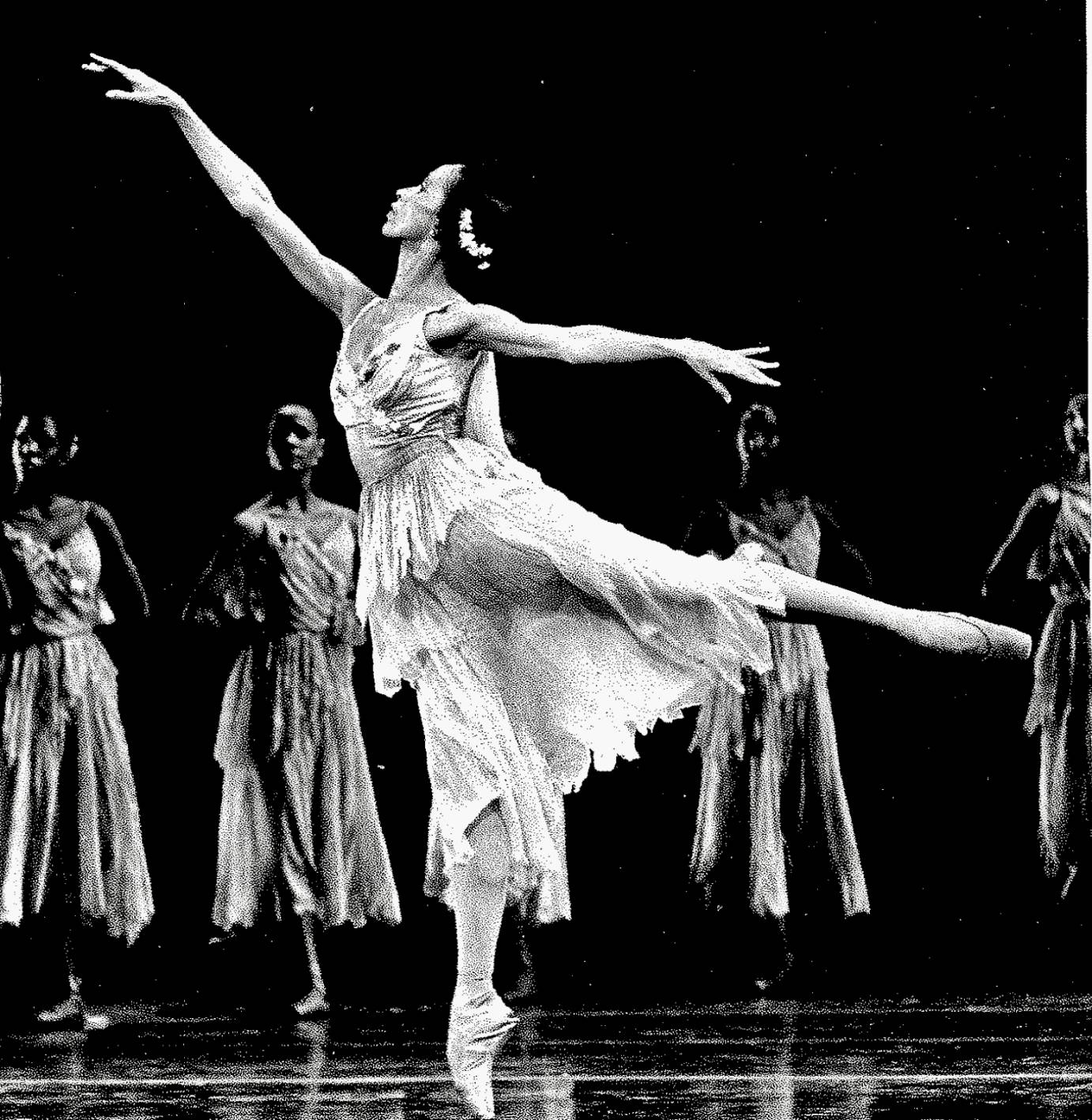
Enamored by the story-telling first act when Giselle falls in love, then goes mad due to her lover's betrayal, the technically demanding second act terrified her. Margaret E. Willis noted: “Johnson was enchanting and spontaneous," while Jan Parry felt, “her mad scene, dark hair clouded around her distraught face, is realistically distressing.”
When asked which passage in Act II was most challenging, Johnson laughs. "All of it! It was easy for me to be the maiden in Act I, however, It was the technical aspects of Act II that really defeated me. Technical demands got in the way of me being a spirit. There were times I was fine and other times I came crashing down to the ground. In the end, my real strength was my persistence, my will to make this happen.”
Later, when a successful TV production of Creole Giselle re-aired on NBC, it gripped the imagination of another young girl; one who would become the next prominent Black ballerina, Misty Copeland.
At the height of her career in 1984, I interviewed Johnson on EOD and she closed the show with this takeaway: “It doesn’t matter where you come from, it’s what you dream of that’s important.”
For tickets to Dance Theatre of Harlem's Season at New York City Center from April 19 - 23, click here.
Bringing a four decade-long chapter of dance history to a close, Artistic Director Virginia Johnson has announced her retirement from the visionary company, set for the close of the 2022-23 season on June 30, 2023.
Her tenure with this powerful presence in the world of ballet includes twelve years in her current role as Artistic Director, preceded by a staggering 28 years as a company member, highlighted by her distinction as a founding member and as a Principal Dancer. As Ms. Johnson becomes Artistic Director Emerita, she will be succeeded as Artistic Director by current acclaimed DTH Resident Choreographer and School Director Robert Garland.
EYE ON DANCE, was an educational series that aired weekly on PBS 1981-2004, created and produced by Celia Ipiotis and Jeff Bush.
Created in 2020 as a way to lift up and include new voices in the conversation about dance, The Dance Enthusiast's Moving Visions Initiative welcomes artists and other enthusiasts to be guest editors and guide our coverage. Moving Visions Editors share their passion, expertise, and curiosity with us as we celebrate their accomplishments and viewpoints.







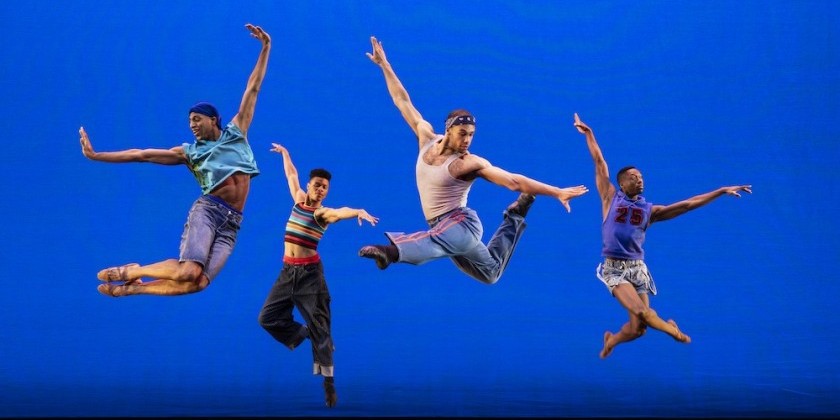
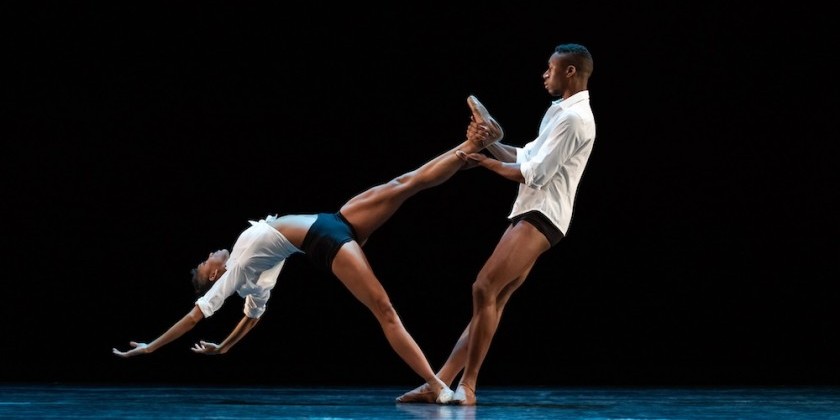
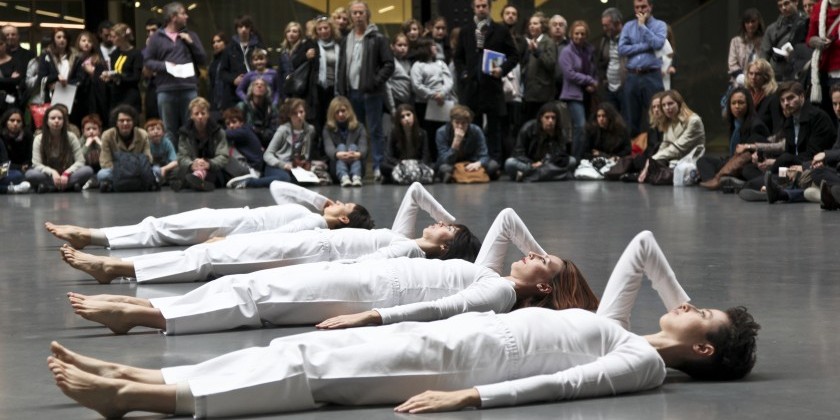
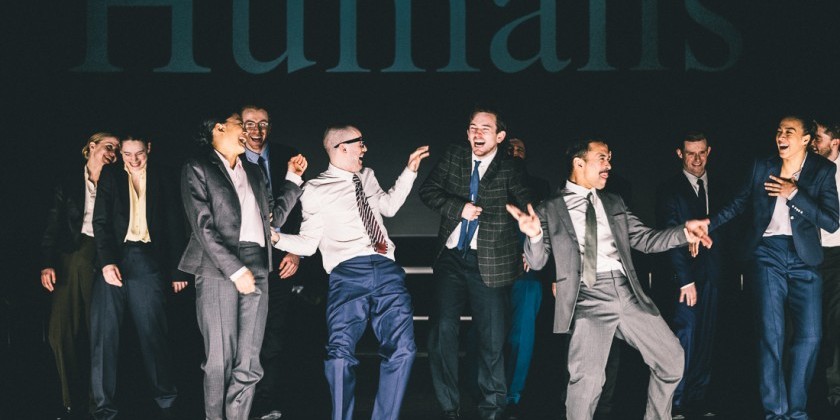

![IMPRESSIONS: Will Rawls' “[siccer]” at the Keith Haring Theatre at Performance Space New York](/images/features_large/20251119_WillRawls_siccer_PerformanceSpaceNY_WhitneyBrowne--55.jpg)